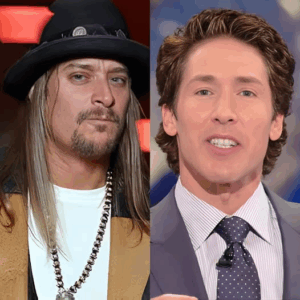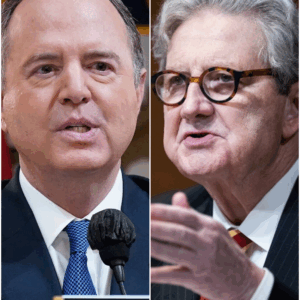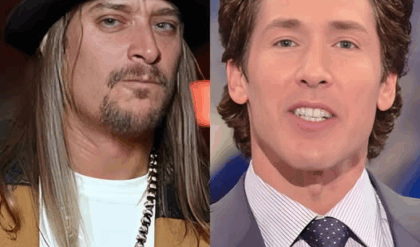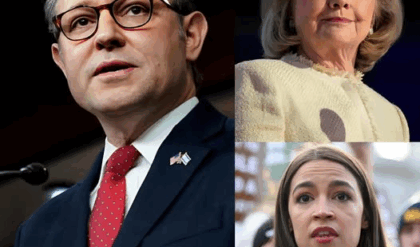There are days when the White House lawn feels like a soundstage for a very specific American comedy: the serious man with the microphone, the wind playing with his hair, and nature itself filing an unsolicited amicus brief. Monday was one of those days. Peter Doocy, Fox News’ tall, unflappable senior White House correspondent, squared off with a familiar antagonist: a bird with no respect for cable news hits or personal space.
Doocy was mid-report on President Trump’s order to reopen Alcatraz—because apparently the present wasn’t chaotic enough without resurrecting a federal ghost prison—when the air shifted. He ducked. He swatted. He announced, with the authority of a man who’s had enough, “There is a bird!” The line pinged across social feeds in seconds, joined by his improvised battle plan: “Send the birds to Alcatraz!”
If you’re new to this saga, yes, this is a sequel. Doocy’s first skirmish came April 11, during a live segment about tariffs and a water dispute. A pigeon—a literal one, not the metaphorical kind we accuse voters of being—appeared to land on him. “It landed on my head!” he yelped, an honest cry that launched a thousand memes and a few conspiracy theories, because the internet is a place where nothing small is allowed to stay that way.
Back to Monday. Dana Perino, co-hosting America’s Newsroom, noticed his evasive maneuvers and—like any good colleague who knows the beat and the beatdown—leaned into the banter. “Peter, are you dodging birds again?” He was. He admitted as much. “I don’t know, I need to, like, shave my head! What’s going on?” Perino teased him: “It’s because you’re so tall and cute,” a line destined for the year-end montage of things that made Washington seem human for seven seconds. Doocy, without missing a beat: “Send the birds to Alcatraz!” Score one for gallows humor. Or gull humor. Pick your poison.

If this were just a slapstick outtake, it wouldn’t merit more than a chuckle and a GIF. But these little breakdowns in the solemn machinery of politics are data points. They reveal the texture of the job, the odd ways live news erodes the barrier between performance and reality. Television is ritual; the correspondent commands the space with a tidy preamble, the chyron does its little carnival barker routine, and the camera tells your brain to pay attention. Then a bird swoops through the frame and reminds you that the world doesn’t care about your segment timing.
It’s not that Doocy’s a magnet for feathers. It’s that he works outside, in a city where wildlife and politics share acreage. On most days, the fauna stick to their lanes. Squirrels run their low-level hustle; the starlings convene like tiny lobbyists on branches; the foxes keep their own counsel. But spring has its moods. And when a six-foot-plus reporter plants himself on the lawn with a starched suit, a few ounces of pomade, and a camera crew, he reads to a certain kind of bird like a challenge.
The Interior Department, never one to miss a chance at levity when the facts allow it, waded in after the first incident. Secretary Doug Burgum’s team texted Doocy to say they were “deploying all assets from the park service and fish and wildlife to figure out what’s going on.” That’s government-speak for: we see you, we’re laughing with you, and also, please don’t make us actually write a memo about pigeons. Charlotte Taylor, the department’s press secretary, lobbed the line of the day to the Daily Caller News Foundation: “You have to wonder if other networks are sending the birds.” Is it silly? Yes. Is it effective? Also yes. It widened the aperture beyond “Fox Guy vs. Bird” to a shared joke about media paranoia, which is the closest thing this town has to civic glue.
The White House kept its poker face. No comment on the second incident, which is exactly what you’d expect and exactly right. Once the press office starts litigating airborne wildlife, the union should step in and declare a work stoppage.
There’s a reason this clip traveled, beyond the perennial pleasure of seeing order give way to absurdity. Doocy is a known quantity. He’s made a career out of being upright without being stiff, occasionally combative without turning it into a blood sport. He engages the theater of the place without becoming its prisoner. When something unscripted happens to a reporter like that—someone who plays it straight until the moment refuses to cooperate—it reads as honest, and honesty is a scarce commodity in the Washington content economy. It’s the same reason people still pass around the video of a BBC correspondent’s kids crashing his office mid-interview. The rupture is a relief.
There’s also the Alcatraz angle, which lends the whole thing a comic undertone. The president ordering the reopening of a one-time island penitentiary sounds like a treatment for a prestige drama that got notes from a network executive who asked for “more island.” Whether the policy is symbolism or substance, the optics are maximalist: tough-on-crime iconography served with a Side of Strongman. Into that imagery swoops a bird, puncturing the tableau with a reminder that even the toughest talk can be photobombed by a creature that weighs eight ounces and eats breadcrumbs.
What strikes me, having watched a lot of sidewalk hits and stand-ups in dismal weather, is how quickly a segment can turn into a referendum on composure. The red light on the camera triggers a social contract: you, the viewer, grant your attention; I, the reporter, absorb the chaos and return you a coherent sentence. When that exchange falters—when the fly lands, the horn blares, the protester chants in your ear, or the bird strafes—you get to see the scaffolding. Most reporters fight it. The good ones play it. Doocy played it. He didn’t posture as the man above it all; he acknowledged the dive-bomb and kept talking. There’s a little lesson in there for a lot of people who confuse authority with denial.
Does any of this matter beyond the meme cycle? Not in policy terms. The Interior Department will not convene a task force on avian harassment of correspondents, despite how much fun that hearing would be to cover. Alcatraz’s fate won’t swing on a quip. But as a cultural artifact, it lands. It says: our politics may be grandiose, our coverage manicured, but the world has veto power over the script. That’s good for the public, which deserves to see the seams. It’s good for journalists, who benefit from reminders that sincerity beats swagger when the teleprompter goes sideways. And it’s good for birds, who, to be fair, were here before the live shot and will be here after.
There’s a deeper, semi-serious thread worth tugging. In an era where so many clips are engineered for outrage, the ones that catch fire often involve something lighter, almost childlike: surprise, discomfort, the sudden loss of cool. They cut across the lines that have become careers. You can dislike Fox on principle and still laugh at a man startled by a pigeon. You can cheer for the administration and still enjoy the chaos of nature asserting itself. That sliver of common ground isn’t nothing. It’s not a bipartisan budget deal, but it’s a button we can still push together.
If I sound indulgent about a minor moment, it’s because minor moments are what frame big ones. The White House beat runs on discipline—hours of waiting punctuated by minutes of action, most of it rote. The repetition wears grooves. You start to think you’ve seen it all. Then, out of nowhere, there’s a swoop, a duck, a yelp, a joke. The grooves shift. The day is briefly new. And on a lawn where history and theater have a long marriage of convenience, a bird improvising on live television is as pure as it gets.
So yes, Peter Doocy battled another bird. Yes, Dana Perino razzed him like a colleague who has seen a thousand green-room disasters and knows levity when it wanders onto the set. Yes, the internet took the baton and sprinted, because that’s the job description. By dinner, the clip had already entered that limbo state where it’s both ubiquitous and oddly cozy, like a rerun you swear you’ve never watched start to finish.
Will there be a third incident? I wouldn’t bet against it. Spring is long. The lawn is large. The cameras are relentless. If it happens, my only request is that everyone keep their reflexes—journalistic and otherwise. Laugh. Pivot. Tell the story anyway. And maybe, just maybe, invest in a hat. Not because the birds are out to get you. Because sometimes the absurd is the only honest thing in the shot, and it helps to be ready when it arrives with wings.
News
The auditorium glitched into silence the moment Joel Osteen leaned toward the mic and delivered a line no pastor is supposed to say in public. Even the stage lights seemed to hesitate as his voice echoed out: “God will NEVER forgive you.” People froze mid-applause. Kid Rock’s head snapped up. And in that weird, suspended moment, the crowd realized something had just detonated off-script.
The crowd expected an inspiring evening of testimony, music, and conversation. What they got instead was one of the most explosive on-stage confrontations ever witnessed inside a church auditorium. It happened fast—36 seconds, to be exact.But those 36 seconds would…
The room stalled mid-breath the moment Mike Johnson snapped open a black folder that wasn’t on any official docket. Cameras zoomed. Staffers froze. The label on the cover — CLINTON: THE SERVER SAGA — hit like a siren. Johnson leaned toward the mic, voice sharpened enough to scratch glass, and read a line that made every timeline jolt: “Her email is criminal.”
Here’s the thing about made-for-TV government: it knows exactly when to hold a beat. Tuesday’s oversight hearing had the rhythm down cold—routine questioning, polite skirmishes, staffers passing notes like we’re all pretending this is not a stage. And then Mike…
🔥 “THE FLOOR SHOOK BEFORE ANYONE COULD SPEAK.” — Investigator Dane Bonaro didn’t walk into the chamber — he tore through it, slamming a blood-red binder onto the desk with a force that made the microphones hiss. The label on the cover froze the room mid-breath: “1.4 MILLION SHADOW BALLOTS.” He locked eyes with the council and snarled, “You want the truth? Start with this.” For one suspended second, every camera operator lifted their lens like they’d just smelled a political explosion.
Here’s a scene you’ve watched a hundred times if you’ve spent enough hours in hearing rooms and greenrooms: a witness with a flair for performance, a committee hungry for a moment, and a gallery of reporters quietly betting which line…
🔥 “THE SMILE FLICKERED—AND THE ENTIRE STUDIO FELT IT.” — Laura Jarrett walked onto the Saturday TODAY set with the kind of calm, polished glow producers dream of. Cameras glided, lights warmed, and the energy felt like a coronation. But right as she settled between Peter Alexander and Joe Fryer, something shifted — a tiny hesitation in her smile, the kind that makes everyone watching sit up a little straighter. And then it came: a voice from outside the studio, sharp enough to snap the broadcast in half. For a full second, no one moved.
Here’s the thing about TV milestones: they’re designed for easy applause. A new co-anchor takes the desk, the chyron beams, the studio lights do their soft-shoe, and everyone is on their best behavior. It’s a ritual as old as morning-show…
🔥 “THE ROOM STOPPED LIKE SOMEONE CUT THE OXYGEN.” — What’s racing across timelines right now isn’t framed as a speech, or an interview, or even a moment. It’s being told like a rupture — the instant Erika Kirk, normally armored in composure, let a single tear fall while standing beside Elon Musk. Witnesses in these viral retellings swear the tear didn’t look emotional… it looked inevitable, like something finally broke through her defenses. And when Musk turned toward her, the entire audience leaned in as if they already knew the world was about to shift.
It was billed as a calm forum on human rights—an hour for big ideas like freedom, transparency, and the obligations that come with having a public voice. The stage was washed in soft gold, the kind of lighting that flatters…
🔥 “THE ROOM WENT DEAD IN UNDER A SECOND.” — What unfolded inside the Senate chamber didn’t look like a hearing anymore — it looked like a trap snapping shut. Adam Schiff sat back with that confident half-smile, clutching a 2021 DOJ memo like it was the final move in a game he thought he’d already won. Staffers say he timed his line perfectly — “Your rhetoric ignores the facts, Senator. Time to face reality.” But instead of rattling Kennedy, something in the senator’s expression made even reporters lean forward, sensing the shift before anyone spoke again.
It didn’t look like much at first—another oversight hearing, another afternoon in a Senate chamber where the oxygen gets thinned out by procedure. Then Adam Schiff leaned into a microphone with a lawyer’s confidence, and John Neely Kennedy pulled out…
End of content
No more pages to load











